Healthy Foods Achieve Mass-Market Sales Levels


The biggest news from the Natural Product Expo West 2016 is that the sale of healthy foods is now mainstream. A record 43 percent of Americans now say they make their food and beverage purchases using the criteria of human and environmental health. Healthier food is on the threshold of being what the majority of Americans eat.
Mass retailers selling healthy foods is now a mega-trend
The sale of healthier food and beverages has achieved mega-trend status in less than a decade. Costco is now the largest retailer of organic food. 7-Eleven, the purveyor of Big Gulp sodas, launched a healthy food line in 2014. From Walmart to Kroger, the retail industry is now mainstreaming the sale of healthier foods.
Consumers are driving this mega-trend. They are demanding healthier food at record levels. Natural and organic foods won over 10 percent sales growth in 2015 at a time when our economy was achieving only a 2 percent annual growth rate.
Sell more plus charge more!
Retailers are learning that they can charge more for sustainably-sourced and healthier foods. One in three consumers are willing to pay 10 percent more for foods that are:
- Non-GMO
- Organic
- Produced by paying fair wages and in safe working conditions
- Produced without an environmental footprint that contributes to global warming
Retailers and food manufacturers still failing to align with consumers
For all the sales success retailers and food manufacturers are achieving, they still lag in meeting a growing consumer expectation for healthier food that is grown sustainably. A stunning 75 percent of consumers believe food manufacturers are more focused on profits than human health. Less than 35 percent believe food manufacturers have a human health focus.
Consumers want foods and beverages with less:
- Artificial ingredients and coloring
- Artificial sweeteners and flavors
- Preservatives
- Genetically modified foods or ingredients
Consumers want to buy foods and beverages that have these three key attributes:
- Mission based. Consumers want their purchases to contribute toward a greater good. Thirty-seven percent of consumers are more likely to buy from companies that donate to worthwhile causes.
- Repurposing of ingredients. Consumers want less food waste. They want to see food waste to be repurposed rather than tossed in a landfill where it will then decay into global-warming methane gas.
- Ethical and sustainable production. Consumers are gravitating toward grass-feed beef. They are exploring plant-based foods as an alternative to meats that have issues tied to animal cruelty and climate-changing emissions. They seek humanely-grown foods like eggs harvested from uncaged chickens. Driving this attribute is the 56 percent of consumers who feel personally responsible for protecting the environment and 52 percent of consumers who wish they could do more.
Will the consumer shift to healthier food solve America’s health crisis?
Is the cup half full or half empty regarding the consumer shift toward healthier food? It is hugely encouraging that healthier food and beverages are achieving mainstream sales levels. Americans are buying healthier foods at a faster growth rate than industrial food.
The challenge is that America is in a weight crisis. This crisis threatens to bankrupt Medicare from a boomer generation seeking pills and medical care to mitigate their obesity and diabetes epidemic. Half of Generation Z, the first generation born in the 21st century, is projected to be obese during their lifetime. A healthier food culture’s higher growth rate may not be fast enough to keep America from plunging over a health cliff that will create significant levels of human and financial pain.
When this happens (it is no longer a question of “if” due to the size of the problem), the question the food and beverage industry must confront is: Who will Americans blame? Will consumers look at themselves, or will they point the finger at an industry in which 75 percent of consumers feel companies are emphasizing profits over health?
To the food and beverage industry’s credit, it is trying to align with consumers. But its efforts are incremental compared to the disruptive improvements required to prevent a health catastrophe. The Coca Cola Co. may be offering smaller 8-ounce soda bottles, but it still measures itself on growing soda sales even with the increased evidence that soda consumption is a huge reason why America is in a weight crisis. Kraft, Taco Bell, General Mills and Campbell Soup should be recognized for taking steps to decrease the amount of artificial ingredients in their foods. But there is growing evidence that consumers are ignoring this incremental progress and are instead avoiding grocery stores, fast-food restaurants and industrially-produced foods as a best practice for losing weight.
With a record 70,000 in attendance, the Natural Product Expo West is an encouraging demonstration of a food and beverage industry pushing itself toward meaningful change. The consumer’s question is whether food/beverage companies can be trusted to deliver the price-competitive, tasty and good-for-you products needed to solve a national weight crisis threatening America’s health and health care costs.
Image courtesy of the author
New 'Green Steel' Micro-Mill for Oklahoma and Choctaw Nation
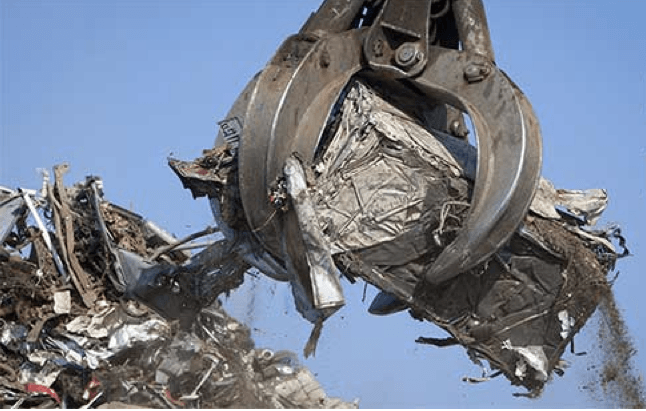

The single largest rural economic development project in Oklahoma history is under way, in the form of a new "uniquely clean" steel mill that just closed on construction funding. That brings a welcome spot of green news to a state haunted by the impacts of its oil and gas sector. In recent years Oklahoma has struggled to corral swarms of earthquakes attributed to a willy-nilly approach to oil-and-gas wastewaster disposal.
The phrase "uniquely clean" isn't often applied to steelmaking, but the new mill illustrates how a legacy manufacturing sector can adapt to evolving environmental standards.
A "uniquely clean and green" steel mill
The new mill will be located in the rural southern Oklahoma town of Durant, the community heart of the Choctaw Nation. It is a recycling plant that will take in pre- and post-consumer steel scrap, and spit out 380,000 tons of rebar once it's up and running in 2017.
The company behind the new steel mill is the Commercial Metals Co., and that's where the green angle comes in. CMC is a member of the Energy Department's Better Plants Program, which recognizes manufacturers that save energy. Better Plants member companies -- the number is currently almost 160 -- set a goal to reduce their energy intensity by 25 percent or more within 10 years, aided with technical assistance from the Energy Department along with the benefit of sharing best practices with each other.
So far, CMC has reduced its energy intensity by 2.02 percent.
A large part of that savings is due to the introduction of a new low-intensity steelmaking process, first introduced into the U.S. by CMC in Arizona. Here's a description of the company's Arizona plant:
Developed and constructed by CMC, it is the first technology of this type to be successfully operated in the United States. This innovative continuous-continuous process, melts, casts, and rolls steel from a single uninterrupted strand, producing higher yields and lower energy costs than the traditional minimill process.
Like its Arizona cousin, the new CMC steel mill in Oklahoma is expected to reduce carbon dioxide emissions by 58 percent or more compared to conventional steelmaking.
To reduce energy consumption, the steel mill will capture gases from the steelmaking process and recycle them for pre-heating the scrap.
The plant also minimizes discharge by recycling water, and it deploys a high-tech air filtering system, among other improvements.
This is just a wild guess, but it's possible that emissions could be further reduced some time in the sparkling green future, when new systems for converting industrial gases to liquid fuel reach the commercial stage.
It takes a village to finance green steel
As the largest economic development project of its kind in Oklahoma, the new CMC steel mill is expected to make an enormous difference in the region. It is expected to support 300 jobs in a census tract that is currently struggling with 13.1 percent unemployment.
It was financed partly with $21 million from the National New Markets Fund, a community development fund that is designed to maximize the social impact of federal tax credits.
The fund is managed by Strategic Development Solutions. Founded by triple-bottom-line pioneer Deborah La Franchi, who is also president of the New Markets Fund, SDS has more than $1.5 billion in socially-responsible investment capital under its wings.
Other partners in the new steel mill are Rural Enterprises of Oklahoma, Inc., Midwest Renewable Capital and U.S. Bank.
In addition, U.S. Bancorp Community Development Corp. (USBCDC), a subsidiary of U.S. Bank, serves as tax credit investor.
About those earthquakes...
The new steel mill is also of interest because it marks a big step forward in Oklahoma's efforts to diversify its economy, which has been rooted in agriculture and extractive industries.
The diversification effort is timely, given the impact of oil-and-gas wastewater disposal in Oklahoma.
In recent years, the formerly seismically-challenged state has become the most active spot in the entire world, a status that researchers have linked to the practice of injecting wastewater from oil and gas operations deep underground.
Beginning last year, state officials began to clamp down on the injection wells, but the barn door may have closed too late.
Earlier this week, the local Fox affiliate OKCFox.com reported that the year-to-date number of earthquakes in Oklahoma has increased 23 percent compared to last year, with 825 compared to 671.
Most of the quakes have been very small -- too small to be felt on the surface -- but among them, several that stand out:
... 2016 has seen more large, damaging types of quakes, including a 5.1 magnitude quake, the state's third largest on record.In 2016, there have been nine quakes 4.0 or higher, compared to just four in 2015.
In the latest episode, earlier this week three earthquakes registering 3.0 hit the north and central parts of the state.
Image (screenshot) via Commercial Metals Company.
New Mapping Tool Will Help Indonesia Track Forest Fires and Deforestation
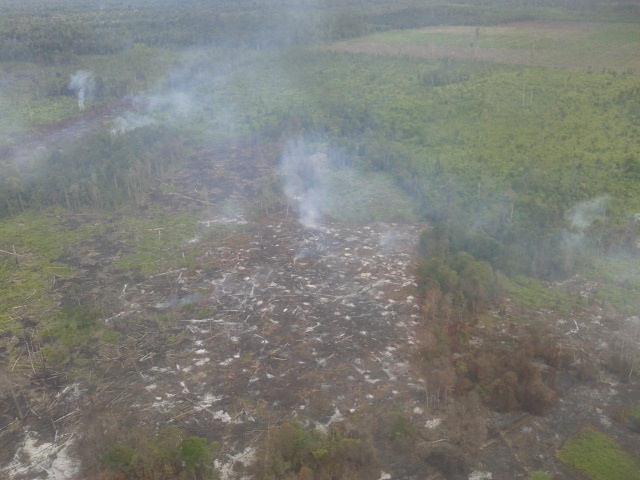

Forest fires in Indonesia are a big problem, and so is deforestation. A fire is now burning on the Indonesian island of Sumatra, where a state of emergency has been declared, the BBC reported. Mapping both forest fires and deforestation is important, and Greenpeace Indonesia just launched a mapping tool that will do both. The tool will also show who controls the land where forest fires and deforestation are occurring.
The interactive map is called Kepo Hutan, and with it users will be able to see if a fire is on peatland or primary or secondary forests. They will also be able to tell if the fire is in tiger or orangutan habitat, or on land with palm oil or pulpwood cultivation, logging or coal mining. The map was created using open-source technology from Global Forest Watch.
“Indonesia is still recovering from last year’s fires disaster, driven in large part by reckless peatland draining and forest clearing for plantations. In the wake of the fires, President Joko Widodo announced new plans to protect and restore damaged and at-risk areas,” said Greenpeace Indonesia forest campaigner Teguh Surya in a statement.The 2015 forest fires in Indonesia were the worst in over a decade, according to Greenpeace. They cost the country an estimated $16 billion, plus haze from the fires impacted millions of people in Indonesia and neighboring Malaysia and Singapore.
Rainforests and peatlands are both very important Indonesian ecosystems. Rainforest areas equal to 300 soccer fields are being destroyed every hour, Rainforest Rescue states on its website. Tropical deforestation accounts for about 18 percent of greenhouse gas emissions. Indonesia has the world’s third largest area of tropical rainforest, and 68 percent of the country’s landmass is covered by forests. Rainforests are being destroyed to make way for plantations.
The largest tropical peatland in the world is in Indonesia and it acts as a carbon sink. Indonesia is a the third largest emitter of greenhouse gases in the world, and carbon emissions caused by peat decomposition and peat fires are 42 percent of the country’s total emissions. Greenpeace refers to peatlands as “perhaps the world's most critical carbon stores,” and they store about 35 billion tons of carbon. And that carbon is released when they are drained, burned and replaced with plantations.
One of the biggest culprits of deforestation and destruction of peatlands in Indonesia are oil palm plantations. Indonesia and Malaysia combined supply 90 percent of the global market for palm oil. When peatlands and rainforests are destroyed to make way for oil palm plantations, endangered species are killed, local communities are uprooted and more carbon is released into the atmosphere. Indonesia’s peatlands and rainforests are home to endangered species such as orangutans, Sumatran tigers and Bornean rhinos. Orangutans are dependent on large forest areas and when they search for food after rainforests are destroyed, they can end up on plantations where they are considered pests. There is a risk that wild orangutans will not live outside of protected areas by 2020.
With a heavy global demand for palm oil, the destruction continues. About 50 percent of the goods we use daily contain palm oil -- with everything from processed foods to personal care products containing it. Palm oil is the “most widely produced vegetable oil worldwide,” according to Rainforest Rescue. Indonesia’s oil palm plantations cover 9 million hectares, an area about the size of Maine, and it is projected that they will cover 26 million hectares by 2025.
Some companies are starting to make commitments to source sustainably-produced palm oil. Johnson & Johnson is one of them. The personal care product company introduced its Responsible Palm Oil Sourcing Criteria in 2014. The sourcing criteria includes no developing of high carbon stock forests, no developing of peatlands, and no use of burning to clear land of new developments or to replant. Since the launch of its sourcing criteria, the company has engaged all of its leading suppliers, which represent almost 85 percent of its palm oil derivatives supply. The goal is to completely implement its sourcing criteria by the end of 2020.
If the majority of companies had similar commitments, deforestation in Indonesia could be a thing of the past.
Image credit: Flickr/Chris Daley
The Face Behind Your Food: Three Farmworkers Share Their Stories
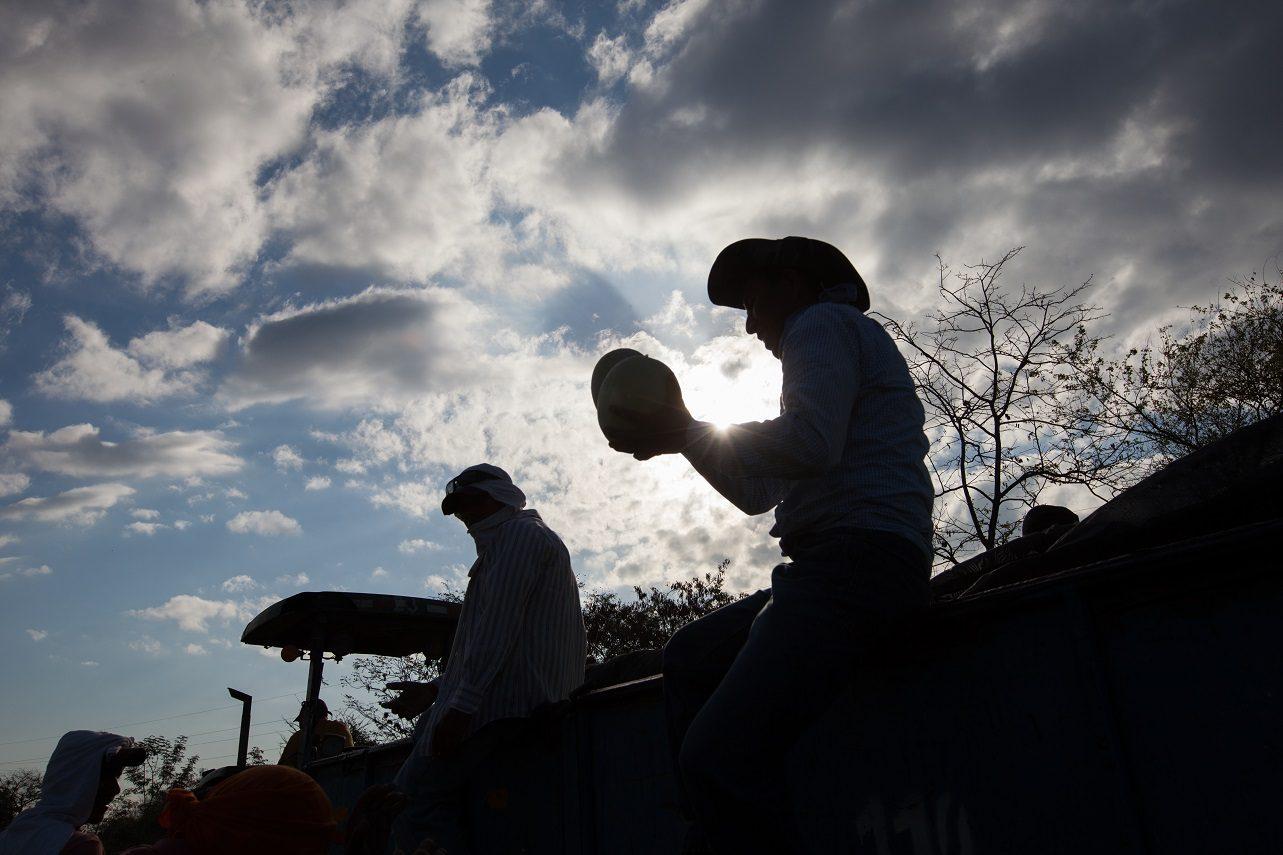

Lupita López Dearcia Comitán is a farmworker in Sonora, Mexico. She’s forty-four years old, has five children, and just so happens to grow the cucumbers you put in your salad last night. It’s a job she has a lot of pride in. Most people don’t know that cucumbers grow on vines like tomatoes, requiring constant care to ensure that the plant grows in the proper direction. It’s a technique called “training”, and Lupita has the practice down to a science.
Lupita knows that agriculture is important work, as do Rubi Lucero Pazos Ávila, 24, and Juan Ricardo Pérez Núñez, 18, who are also employees of Grupo Alta, a Fair Trade Certified farm in Northern Mexico. Each year Lupita and Rubi travel from their home communities, in Chiapas and Veracruz, to work the harvest. This is Juan’s first season with Grupo Alta; he also grew up in Chiapas in Southern Mexico. Together they’re part of a global agricultural workforce more than 1.2 billion strong, lending their time and their skill to the task of growing the world’s food.
Given that it's Farmworker Awareness Week, we asked Lupita, Rubi and Juan to share their thoughts on what it means to be a farmworker, why Fair Trade matters, and what it takes to produce our favorite fruits and veggies. Here’s what they had to say:
1.) The Work is Not For The Faint of Heart:
Farm labor is not easy, no matter how you slice it. Lupita explains that “the work can be hard on the waist and back sometimes.” Juan adds that the climate can be a challenge as well: “walking a lot and being in the sun in very hot weather” can take a toll, which is why he’s happy to work on a Fair Trade Certified farm. The Fair Trade standards require measures to reduce heat exhaustion, such as shade and water breaks, along with 200 other criteria to protect the health and safety of farmworkers.
“Every type of work is difficult in its own way, and many things seem easy until you have to do them yourself,” says Rubi. Spend a day in a farmworker’s shoes and you’ll see why.
2.) We All Have the Same Hopes and Dreams:
The further we distance ourselves from the fact that there's a human face behind our food, the less we seem to care about their wellbeing. Out of sight, out of mind.
That has to change. Farmworkers have families, lives, communities, hopes and dreams. Lupita, who loves to embroider, hopes that her son will continue to study so that he can get a good job one day. “My dream is to raise my son well, and to take advantage of the time that God gives me in this life.”
Juan’s outlook is simple –“My hope for the future is to be happy. I ask for nothing more.” Juan is also a movie buff and a soccer player. Fun fact- the farmworkers at Grupo Alta constructed a soccer field for the workers and their families using Fair Trade Premiums.
Rubi, who volunteers her free time to help families in the community and loves to eat out on Sundays, says that she wants to “grow professionally here at Grupo Alta so that I can move into larger positions and earn a larger salary.”
3.) Farmworkers are Stewards of the Land:
Just as people are responsible for destroying the environment, so too are people responsible for protecting it. In agriculture it’s the farmers and workers who steward the land, which is why Lupita wants people to know how hard they work to “take good care of the trees on the farm, and also protect the local water sources.”
Rubi also adds that they have a robust recycling program at the farm – a key way to conserve the environment.
4.) Sanitation is Essential:
We forget how our own health and safety is linked to the health and safety of farmworkers. Treating workers well, conducting trainings on safety, and incentivizing best practices leads to better product outcomes and better working conditions for farmworkers – all of which are essential on a Fair Trade Certified farm. “We need to pay lots of attention to cleanliness and consistency,” said Rubi. “The work can be hard, but it is very important because it lets us earn money for our families.”
5.) Fair Trade Really Matters:
“Fair Trade is important to me because it’s fair to the workers. It let us plan major projects that don’t just benefit the workers, but our families & home communities as well. [In this way] Fair Trade will help us for the whole year – both while we are here at the farm, and when we are back in our communities.” - Rubi Lucero Pazos Ávila.
There are two important elements to Fair Trade: the Standards and the Community Development Premium. First, all Fair Trade farms must meet and adhere to hundreds of individual compliance criteria, for example:
- Child labor is prohibited & access to schooling and daycare are required.
- Forced labor is prohibited. Workers are free to leave at any time.
- Housing must be safe & sanitary; bathrooms and showers must be in good working condition.
- Farms must show continuous improvements over time.
Workers also benefit from the Community Development Premium, an additional amount of money that goes directly into a worker-controlled bank account with every Fair Trade sale. The Fair Trade committee, which Lupita, Rubi and Juan are members of, votes democratically on how to use this money to address important needs on the farm and in their home communities.
In addition to the soccer field project, workers at Grupo Alta are using Fair Trade Premiums to enhance and expand services of a dental program for the community in collaboration with The Alta Foundation, a nonprofit organization. Gerardo Ramierz, who has worked at the farm for 19 years, explains: “Fair Trade funds are helping workers on this farm. Thanks to the farm & our Fair Trade Premiums, many of us have access to dental care for the first time.”
The Big Picture
There is a broad spectrum of agricultural operations around the world. There are farms like Grupo Alta that are working hard to increase social and environmental responsibility, through Fair Trade and other initiatives, year over year. Unfortunately, there are also farms that need a lot of improvement, where conditions are poor and farmworkers are simply not valued.
It’s also important to note there are many farms that want to improve but simply can’t afford it. Even something as simple as buying new mattresses for four thousand workers can put a huge financial strain on a business whose margins are already so small. For real change to occur, even the first baby steps, business and consumers must commit to supporting the journey.
What you can do:
This Farmworker Awareness Week, use your voice and your dollar to say thank you to farmworkers around the world. Think about Lupita, Rubi and Juan, and how directly our lives are connected through something as simple as a cucumber.
Looking for the Fair Trade Certified label is a good way to celebrate farms working for change. Fair Trade products can be found at Whole Foods Market, which purchases the vast majority of all Fair Trade Certified produce, as well at retailers like Earth Fare, Costco, Safeway and smaller natural food stores.
Being a farmworker “is very hard work,” says Lupita, “and consumers should appreciate the people who do this work, because they we put a lot of effort into caring for the products.”
SXSW: Q&A with Kathryn Finney, Creator of First Accelerator for Black and Latina Tech Founders
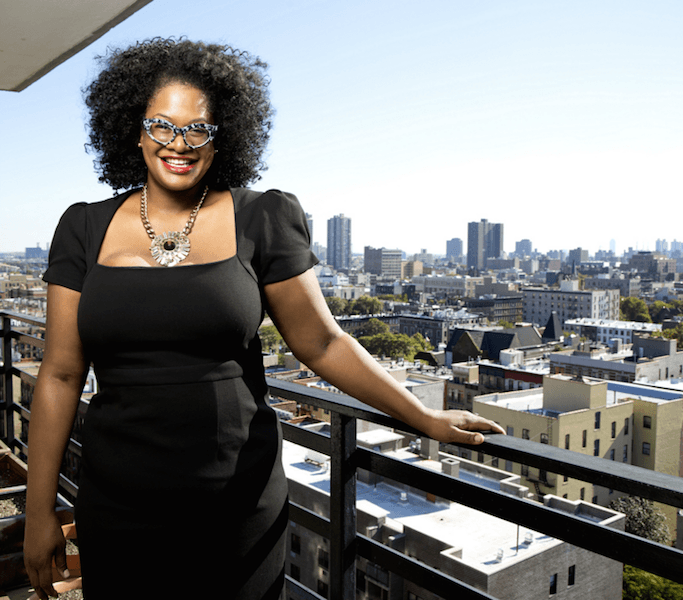

Kathryn Finney has made it her mission to ensure that talented Black and Latina tech founders stake their claim in the industry. Her organization, DigitalUndivided (DID), now in its fourth year, recently announced the opening of its new innovative accelerator program during the South by Southwest conference in Austin, Texas.
Slated to open this summer, the Big Innovation Center will be housed in a 6,000-square-foot space in the heart of downtown Atlanta, close to the Spelman, Morehouse and Clark Atlanta University campuses. Hoping to reach more than 2,000 Black and Latina female founders, the accelerator will offer a four-month program that trains high-growth founders in startup methodologies.
Participants will also have access to more than 100 powerhouse mentors, office space for up to a year, and access to the program’s newly launched Harriet Fund, led by investment expert Gayle Jennings O’Byrne, formerly of JPMorgan Chase.
We caught up with Finney at SXSW to learn more about how her and her team are fundamentally changing the discussion about tech and diversity, and creating innovative opportunities for women of color.
TriplePundit: Why was it important for you to announce the launch of the new Big Accelerator to fund Black and Latina founders here at SXSW?
Kathryn Finney: We launched here because we have a large cross-section of different communities coming together. We have a unique mass of the Black and Latino communities, local government, the tech community, and the mayor of Atlanta who attended our launch event to represent the city of Atlanta’s support of what we’re doing. [South by Southwest] is one of the few places where all of the communities are en mass at the same time.
3p: What was the decision-making behind housing the Big Accelerator in Atlanta?
KF: If you’re looking for a large portion of black and brown talent, there is no other place in the country. In particular, Atlanta’s city government is very visionary and really invested in making sure women and people of color are promoted and part of the economic ecosystem. A significant portion of dollars are spent on women and women of color in the city. Before coming to Atlanta, we surveyed a number of different cities to house the Big Accelerator. But Atlanta jumped out, engaged us, and really wanted us to build our model there.
The city government and business community reached out to us directly and said: “We want you and we’ll support you.” It’s something we never had before and became a huge incentive for us to choose Atlanta.
3p: Tell us more about the Harriet Fund and what type of investment you’re looking to make in founders of color.
KF: There are two parts to the fund: the venture fund and the angel syndicate. The angel syndicate is live right now. In fact, I have some of my own money invested in some of the companies that come through the program. I highlight that because I’m personally writing checks from my own bank account to invest in companies. We have other investors from companies like Wordpress who have also come on board. This is early-stage money that will go into companies that are part of the accelerator program. The exact dollar amount invested into each company will vary.
The Harriet Fund will invest in later-stage companies once founders’ have proven their models.
One of the challenges in black and brown communities, and why venture funding has been lacking, is that our companies have not been positioned in a way to attract venture funding. One of the challenges I see is that founders often think too small. For example, someone making $2 million per year in their business identifies themselves as being successful. However, for an investor, $2 million isn’t attractive. We’re looking for bigger returns.
Venture funding is also much more established and institutional, making it difficult to get seed funding. My role in the fund is to be a champion of the entrepreneurs. I’m super excited for all of the things that we’re doing, and I think that by being bold and being out there and putting our own money and reputations on the line, we’re giving others permission to do the same.
3p: What’s interesting about your work is that you haven’t lost your zest behind the ingenuity of the programs you’ve created. You launched DID in 2012, your Focus 100 Fellowship shortly thereafter, and now the Big Accelerator. How do you continue to stay committed to your goals and the founders you’re looking to support?
KF: One of the things we’re really good at doing is finding talent. We have an amazing team running the accelerator. I think it's important to build an excellent team who share the same vision. We’re coming from the position that our work will bring something valuable to the community, and a perspective that doesn’t currently exist.
Personally, I understand what it means to be an entrepreneur in this (often lonely) space. But, like many of the founders that will enter our program, this work is something that I have to do. There is no other option.
Images courtesy of Kathryn Finney/DigitalUndivided
New Partnerships Aims to Streamline Carbon Pricing
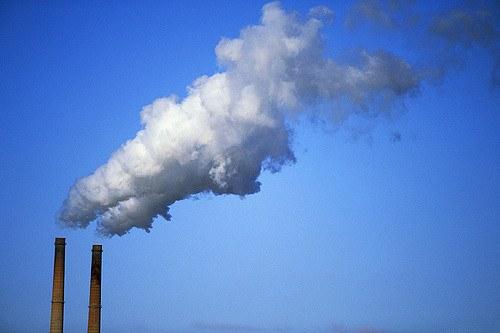

Carbon markets are expanding quickly around the world, with China, California and Quebec now jumping on the bandwagon, but the results have been mixed. A new partnership led by former U.S. Vice President Al Gore and Ecofys seeks to investigate how effective carbon pricing can better lead to their ultimate goals: sustainable global growth and reduced greenhouse gas emissions.
There are many challenges facing carbon markets, mostly due to the lack of a strong international framework. It is tough to exchange credits across both national, and sometimes regional or state, borders, as regulations and liquidity can vary greatly from market to market. The Paris Agreement, while historic, did not help as it leaves each country to determine on its own how it will meet its climate goals. That means there won't be a global carbon market for some time, at least.
It gets even more complicated here in the United States, where the backwards, climate-denying caucus in Congress has prevented the creation of a national carbon market. Here, states have taken the lead. California now exchanges carbon credits with Quebec, while a coalition of Northeastern states has set up a regional exchange. However, with differing pricing systems, exclusions and exchange mechanisms, these systems often have challenges working in tandem even though they are trying to solve the same problem -- climate change.
That's where this new partnership comes in. “The proposed research aims to deliver actionable results and solutions for these challenges," said Kornelis Blok, director of science at Ecofys, in a press statement. "With our innovative approach, we will take a comprehensive look at the issues, encompassing the policy, industry, investor and civil society perspective.”
Another challenge the partnership aims to tackle is allowing for better understanding of climate risk -- one of the reasons that coal bonds and companies' stock prices are collapsing. As companies are becoming increasingly aware, climate change can have adverse impacts on their bottom lines, due to its wide-ranging impacts on water, weather and agriculture, as well as its propensity to increase natural disasters. This has to be factored into carbon pricing, making effective pricing a crucial component of helping companies, and investors, determine climate risk.
“Carbon remains a largely unpriced externality in today’s financial markets," said David Blood, senior partner of Generation Investment Management, in a statement. "Although it is impossible to know the exact timing of the prospective tipping point when financial markets will fully internalize carbon risk, it is critical for investors to prepare for its inevitable impact.”
The project will run for three years and will focus on practical, actionable policy solutions to better connect carbon prices, climate risk and actions toward the global 1.5-degree limit in global temperature rise we agreed to in Paris this past December. Hopefully it will come alongside moves to develop a truly national carbon market here in the United States.
Photo Credit: Gerald Simmons via Flickr
Oil Sands Giant Tells Shareholders to Vote 'Yes' on Climate Change Disclosure

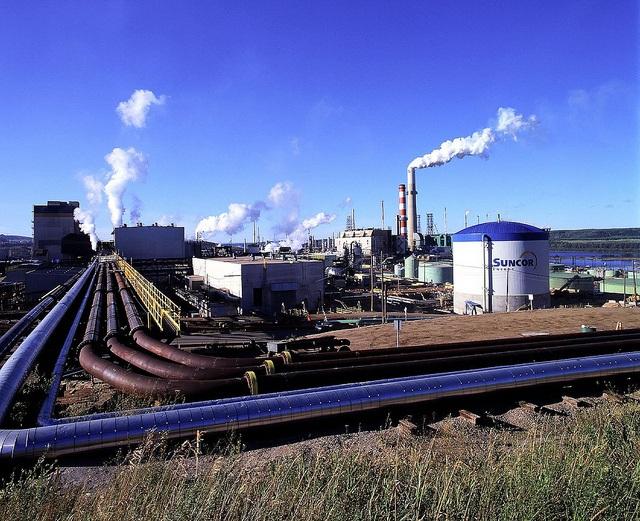
While energy companies here in the U.S., including ExxonMobil, balk at any discussion of climate change, one company north of the border is embracing a shareholder resolution that would require the public disclosure of information about its future climate-related performance.
Suncor, a US$ 31 billion (CAD$40 billion) integrated energy giant based in Calgary, Alberta, is advising its shareholders to vote “yes” on a proposal that mandates the company to disclose how it is moving forward as the world turns toward a low-carbon economy. The results will be officially announced at Suncor’s annual meeting in Calgary next month.
Critics of Alberta’s oil sands development, which despite current low energy prices is set to increase both in production and carbon emissions, will be encouraged by the decision of Suncor’s management to avoid a fight over this proposal. The company is a perennial a target of criticism by advocacy groups across Canada, including Sum of Us, which has long slammed the company’s sustainability performance.
Recent political and economic realities, however, have besieged oil sands investors. Oil prices have long helped fuel Canada’s economic growth, but worldwide prices have plunged over the past 18 months, and in turn that trend has made oil sands extraction far less profitable.
Meanwhile, Canadians did a 180-degree turn last year, bouncing Conservative Prime Minister Stephen Harper from office after an almost 10-year run in favor of Justin Trudeau, who recently said Canada would align with the U.S. on climate change policies. Trudeau has suggested that Canada implement a nationwide carbon tax, but the details have left individual provinces bickering amongst themselves and the federal government.
To that end, Suncor’s CEO, Steve Williams, said on Tuesday that a carbon tax is the type of policy needed in order to move aggressively against climate change — a stance the company says it has taken since 2011.
Hence, while insisting that the oil sands are integral to meeting Canada’s energy needs, the company acknowledges that it “has a responsibility to address the environmental impacts of its operations and it strives to continuously raise the bar on environmental performance.” The resolution was proposed by NEI Investments, a mutual fund company based in Toronto.
Despite Suncor’s board and management’s encouragement for its supporters to vote for this shareholder resolution, the company is hardly shying away from its oil sands operations. In fact, on Tuesday the company announced the completion of its US$3 billion acquisition of Canadian Oil Sands, a company that had long extracted crude oil from the Athabasca oil sands in northeast Alberta. The company has a 50-year history of investment in the region and takes credit for innovation that has allowed the process of oil sands extraction and refining to become far more efficient and less carbon intensive.
As environmentalists point out, however, while the oil sands sector has become more efficient, it has also harvested far more oil, with a resulting emissions spike over the past few years.
Curiously, while suggesting to shareholders that they support more aggressive disclosures related to climate change, Suncor insists that they vote "no" on a proposal that would require the company to report on its lobbying activities and the amount it spends on such communications. Clearly those activities could be related to energy policy, but the company’s board and management insist that its disclosures are already sufficient. The company’s overall stance will not mollify all of its critics, but Suncor’s acceptance of climate change as a risk should send a message to its competitors —north and south of the border.
Image credit: Suncor (Flickr)
From Masai Runaway to Eco-Entrepreneur
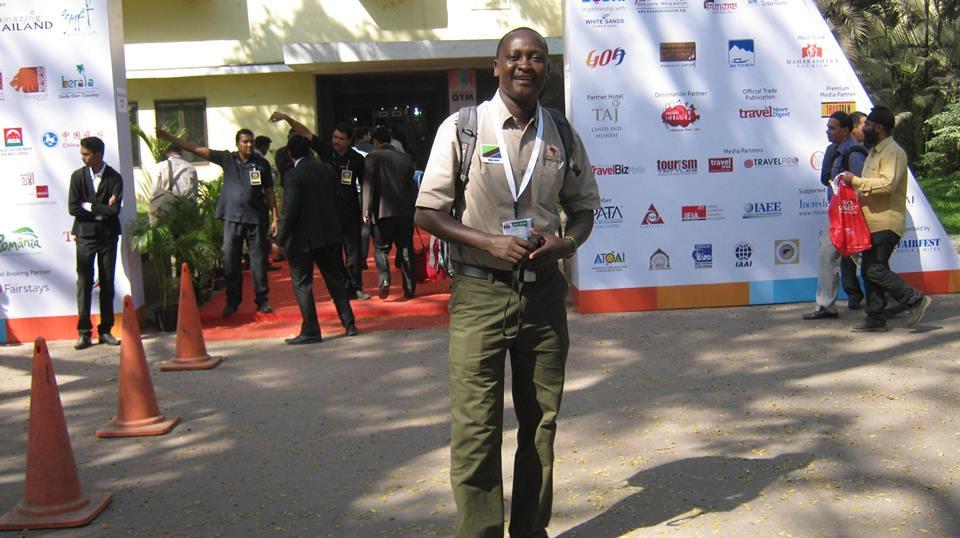

The road to successful entrepreneurship is a rough one, particularly if you're launching a business with a purpose beyond profit. But the path to success in the U.S. could be considered a cakewalk compared to so many countries where the hurdles involve things we can't even imagine.
I met Peniel Laizer by accident. During a recent reporting trip to East Africa, my husband and I had a day to spare in Arusha, the largest city in Northern Tanzania, and I suggested a grand journey to the famed Ngorogoro crater, a conservation area three hours drive from the city center known for beautiful landscapes and abundant wildlife.
I was a travel editor then, so I asked some experts for the best possible option if we had just a single day to spend in the crater. My friends at the tour-booking firm Viator led me to Lights on Africa, a small but exceptionally competent safari company owned by Laizer.
We met Laizer the night before we were to head to the crater. He wanted to put names to our faces and make sure we were getting the most out of our experience. I’d assumed it was because I was a journalist, but I soon learned that Laizer had no idea. This was just what he did with all of his customers. And so, over a Tusker beer, we learned his story.
Just a few months before his 18th birthday, Laizer’s uncles decided it was time for him to get married.
Maasai have no autonomy when it comes to marriage. It’s a negotiation decided by families, and age 18 is when Maasai warriors meet their wives, start families, and begin herding and raising their own cattle. Laizer’s uncles pulled him out of school to prepare him for marriage and gave him five cows so he could pay a suitable bride price.
Desperate to continue in school so he could gain the skills to allow him to leave his village, break free of traditions and start his own business, Laizer defied his uncles, sold the cows and ran away to the city of Arusha to find a way to continue classes.
He was a country kid with few skills, but he’s a good conversationalist with a kind and likable face. Without compunction or shame, he asked everyone he met in the city — in shops and on the street -- about finding the local college. When he finally located it, he went straight to the principal’s office and begged to be allowed to stay and study.
“I said I would study anything. He advised me to start with an English course,” Laizer said. The principal also agreed to let Laizer stay in his home in return for doing some domestic jobs. He’d been studying hotel management for four months when his uncles came to Arusha to find him. They confronted the principal when Laizer wasn’t home, demanding that he be returned to their village. The head of the school said he had no idea where their nephew could be, and the uncles left his home. But as soon as Laizer returned, the man gave him bus fare and told him to leave his home and the school immediately since he knew the uncles would return.
“I went to bus station and boarded a bus to anywhere except my village,” Laizer said. “I didn’t care where. I just ran.”
He landed just outside the Tarangire National Park and, with his new English skills, began working as a waiter at a lodge. After spending about a year getting to know the foreign guests, he realized there was room in the safari market for something new.
“I wanted to provide high-quality safaris, wildlife, cultural and historical experiences to clients using the locals as guides,” Laizer explained.
By hiring locals, instead of guides imported from cities, he could help to generate new employment for local youth, stabilize the local economies, and educate rural people on the importance of protecting the country’s natural resources and the value those resources have in terms of tourism. When locals feel invested in the wildlife, poaching and game-hunting plummet.
He began saving to go back to school and in 2009 returned to Arusha to get his certificate in travel and tourism. In 2010, he launched Lights on Africa with little more than a concept.
He had a vision, but no idea how to run a business, how to get customers, how to obtain an office and then pay the rent on an office. Slowly but surely, those pieces came together. He realized he didn’t have to buy a fleet of vehicles, which would have required a large chunk of capital. He could rent them on an as-needed basis.
“I had no money. I started opening my company while still working for someone else. I built a small website and began completing all the licensing and registration. It took me three years,” Laizer said. “The big challenge was how to get clients.”
He began working with booking sites like Viator and TripAdvisor, and the clients began trickling in.
“It is working, slowly. I see the improvement in every year since I started. In 2014, the total sales without deducting expenses were about $11,160 USD and in 2015 the total sales were $16,000.”
He’s expecting to see sales increase to $35,000 this year.
“I see the future of eco and cultural tourism getting more popular and brighter, but there continue to be challenges to educate the local people about maintaining their culture and getting people educated to work in the field,” Laizer said. “It’s the job of this generation to launch businesses in Tanzania that will protect the culture and provide the kinds of jobs the people need."
Jo Piazza is an award winning journalist and bestselling author. Her latest book How to Be Married will be released in April.
Image courtesy of the author
Solar Beat Natural Gas for New Electric Generation Capacity in 2015


The U.S. Solar Market Insight 2015 Year in Review report was just released and is full of good news for the industry. Solar energy had another record-breaking year in 2015, installing nearly 7.3 gigawatts of new capacity. Meanwhile, pricing for U.S. solar systems decreased by 17 percent from 2014.
For the residential market, average prices were at $3.50 per watt for installed solar energy generation capacity in the fourth quarter of 2015. For those who aren't familiar: Price per watt is a way to compare the capital costs of different forms of electricity generation. It refers to the ability to produce a watt of electricity compared to the investment dollars spent, and doesn't refer to how much homeowners will pay for a watt of energy from their system once it's installed.
"Material costs for panels and equipment have dropped, while energy production has increased due to greater solar panel efficiency," said Nir Maimon, CEO of Sol Reliable, a solar installation and green-energy solutions company headquartered in Los Angeles that services residential and commercial customers throughout California.
The residential solar market had an amazing year in 2015, with 2,099 megawatts installed. This represents a 66 percent increase from 2014. Again in 2015, California led the market with nearly half of the residential solar PV installations. Relatively high electricity costs, a variety of financing options and utility-rebate programs make this an ideal market.
Technological advances have made solar more appealing to consumers, Maimon pointed out. For instance, Sol Reliable employs solar-system monitoring for its residential solar PV systems, allowing homeowners to know exactly how much power their system is generating. Microinverters and power optimizers increase the efficiency of solar systems, especially when shading is an issue. Overall, solar panel efficiency is increasing, which is why Maimon believes it is crucial to always have the most technologically-forward systems currently available for buyers seeking the highest return on investment.
“There are higher-efficiency solar panels available on the market now, which come at a slightly lower price [per watt],” Maimon noted. "Average panel efficiency is now 17 to 21 percent, while previously, it was closer to 16 to 17 percent efficiency. Higher energy productions mean great [utility bill] savings and the reduction in price allows us to offer buy options with a higher cash flow."
This is because the more energy the solar system produces, the greater the savings for residential customers. Higher-efficiency solar panels also enable homeowners to generate a larger total percentage of their electricity use.
Even though average solar equipment costs fell by 17 percent overall, soft costs for the residential market, including design, permitting and on-site labor, actually went up by 7 percent. This is largely because customer acquisition costs have increased.
Non-residential solar PV installations, however, didn't follow the same trends as residential and utility PV, and actually declined 5 percent from 2014 numbers to 1,011 megawatts of installed capacity in 2015.
Perhaps one of the most surprising bits of news is that solar energy beat natural gas for new electric generation capacity in 2015, for the first time ever. "With PPA prices for utility-scale solar already ranging between $35 per megawatt-hour and $60/MWh, utility PV’s value proposition is evolving beyond simply meeting renewable portfolio standard (RPS) obligations," states the U.S. Solar Market Insight 2015 Year in Review. "On top of RPS-driven demand, centralized PV is proving to be an economically-competitive resource to meet utilities’ peak power needs. This is especially true in regions like Texas and the Southeast, where utilities are retiring their aging coal fleets and replacing them with utility PV, alongside combined-cycle natural gas plants."
Although solar incentives, including the renewable energy tax credit, certainly help the industry develop, the significant drop in solar panel and equipment prices is beginning to allow solar energy to compete on its own merits. With a five-year extension of the federal tax credit, the future of solar energy looks bright.
Image Credit:Flickr/Oregon Department of Transportation
Donald Trump's Global Stability Risk: Why We Really Need to Care
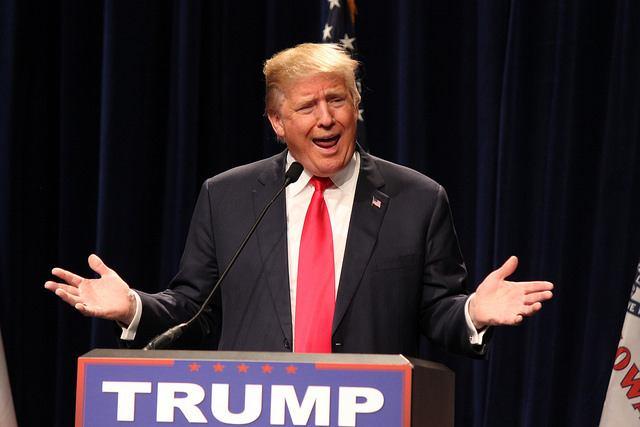

Republican front-runner Donald Trump has been on many lists in his lifetime. He's been called one of the richest people in the country (a title that is constantly debated), the owner of one of the tallest buildings in Chicago, and likely the most controversial candidate to ever run for the office of the president.
Last Thursday, the Economist Intelligence Unit (EIU) Global Forecasting Service (the sister publication to the Economist newspaper) ascribed one more unprecedented rating for Mr. Trump: Should his bid for U.S. president succeed, he'd pose as great a risk to global security as terrorism. Put another way, said analysts: He'd be a greater risk to world peace and stability than if investors suddenly ditched the global oil market, or the U.K. were to walk out on its membership in the European Union.
Suffice to say, it's not the kind of list a presidential candidate usually aims for. But according to the EIU, which supplies a full list of Trump's qualifying attributes, being sixth on the list of 10 greatest risks to world stability is a rightfully-earned faux pas.
"First, he has been exceptionally hostile towards free trade, including notably NAFTA," the authors said. His promise to 'break' the North American Free Trade Agreement, which he has referred to as a "disaster," and his ill-timed public statements about Mexico, China, the Middle East and, well, a list of foreign governments "could escalate rapidly into a trade war" that could torpedo years of negotiations with neighbors near and far, the analysts said. So could what they refer to passingly as his "militaristic tendencies," his additional foot-in-the mouth promise to kill the families of terrorists and his ban on Muslims entering the country -- all of which offer, they suggest, a "potent recruitment tool" for terrorist groups abroad. Adding to that disturbing list is his potential to be a divisive impact in Washington once elected.
"[The] innate hostility within the Republican hierarchy," combined with what analysts called the equally "virulent" animosity of Democrats toward Trump's policies would be a recipe for yet another eight years of road blocks and ineffective actions in Congress.
But what is really the heart of the matter for the EIU, says Washington Post reporter Philip Bump, who has written extensively on Trump's campaign, isn't the Republican front-runner's attitude toward Muslims or his potential to cause inaction on Capitol Hill, but his stance on global markets: What he has said he won't support.
"Trump's a risk not because of the violence that has swirled around his rallies or because of his rapidly evolving policy positions -- at least not primarily. He's a risk because he hates free trade," Bump wrote.
And that's actually pretty important, the report authors said, because free-trade assurances aren't necessarily what is going to drive Americans to vote against Trump. For the Economist newspaper's "wealthy audience," trade protectionism is a touchy topic. For U.S. voters concerned about jobs, cost of living, terrorism and domestic policies, not so much. U.S. voters aren't likely to care about his danger to free-trade agreements (particularly to ones that a certain amount of the population has opposed). They are going to be concerned with how he affects their lives at home.
And, of course, that's the point of the EIU's shock-and-awe announcement. It isn't what we see every day in the news on our U.S.-tailored Google news feeds or our locally-written newspapers that tell us the international ramifications of our decisions. And these outlets don't always share with us how global communities, including our potential business contacts, may be impacted by the leader we choose. As hard as some may advocate, however, we don't live in a North American bubble. Even Trump knows that.
Trump has invested heavily overseas. India, Canada, Ireland, Azerbaijan, Uruguay and, yes, Mexico, the seeming bane of his presidential focus, have enjoyed investment by Trump industries. He knows as well as any business investor with international aspirations that amicable relationships with other countries benefit the United States as well as communities abroad and that protectionism only encourages fractious relationships, despotic governments and diminished investment opportunities. Like it or not, considering international views in our domestic decisions is good business.
If there is any benefit to Trump's bid for presidency, it is that it's awakened debate on what kind of country we want to be, and by what kind of ethics we want to define our image, both home and abroad. And judging from the EIU's analysis and the press it has received, those are issues that the international community cares deeply about, as well.
Image: Evan Guest